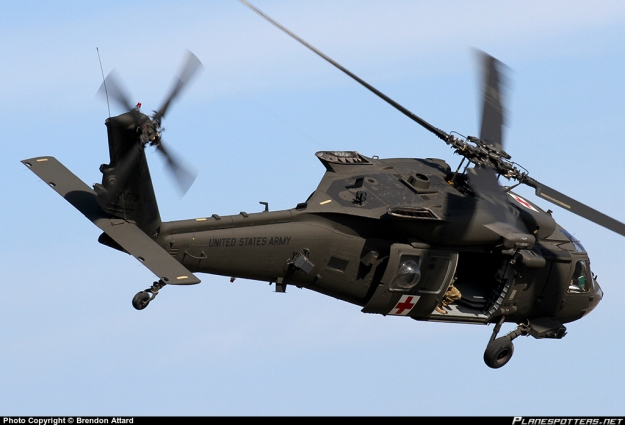Trip Ready: Making Sure Optimal Problem for Your UH 60 Helicopter
Trip Ready: Making Sure Optimal Problem for Your UH 60 Helicopter
Blog Article
Browsing Uh 60 Helicopter Regulations and Compliance Requirements

Regulatory Structure Review
The regulative framework regulating UH-60 helicopter procedures encompasses a complex collection of requirements and rules developed by air travel authorities. These guidelines are made to guarantee the secure and reliable procedure of UH-60 helicopters in various environments. The Federal Aviation Administration (FAA) plays a main role in developing and implementing these regulations, which cover a large range of functional aspects, consisting of airworthiness criteria, pilot certifications, upkeep demands, and operational treatments.
Conformity with these laws is essential for helicopter operators to keep the highest degree of security and functional integrity. Failure to follow these policies can cause major effects, including crashes, injuries, and regulative sanctions. Helicopter drivers must remain informed regarding the most current regulative growths and make certain that their operations are in full compliance with all appropriate rules and requirements.
Airworthiness Assessments and instructions
In the middle of the regulative framework regulating UH-60 helicopter operations, an important focus lies on compliance with Airworthiness Directives and conducting comprehensive evaluations to maintain security requirements and operational reliability. Airworthiness Regulations (ADs) are issued by air travel authorities to address unsafe problems in airplane, including the UH-60 helicopter, and required details activities to be taken by operators or proprietors. Compliance with ADs is obligatory, and failure to abide by these instructions can lead to severe effects, consisting of grounding of the aircraft.
Routine assessments are critical to ensuring the airworthiness of UH-60 helicopters. By adhering to a rigorous assessment routine, operators can find and deal with possible concerns promptly, therefore enhancing the safety and integrity of UH-60 helicopter operations.
Pilot Qualifications and Training

Pilot training for UH-60 helicopters is comprehensive and covers a vast array of topics, consisting of aircraft systems, emergency situation treatments, navigation, and mission-specific training. Additionally, pilots undergo simulator training to exercise various emergency scenarios in a controlled setting. This training aids pilots establish the essential skills to take care of challenging circumstances effectively.


Additionally, recurring training and specialist development are crucial for UH-60 pilots to remain present with the newest laws, technology, and finest methods. By investing in pilot qualifications and training, drivers can boost safety and security, optimize efficiency, and make certain compliance with regulative requirements in the operation of UH-60 helicopters.
Functional Limitations and Requirements
Pilot credentials and training work as the structure for recognizing the operational restrictions and demands related see this site to UH-60 helicopter procedures (uh 60). These functional limitations are established to make sure the safety and security of the team, guests, and the airplane itself. Functional restrictions might include variables such as weather conditions, weight constraints, altitude restrictions, and functional boundaries. It is crucial for pilots to be well-versed in these limitations to make informed decisions throughout trip procedures. Additionally, conformity demands, such as sticking to details trip courses, communication methods, and emergency situation treatments, are vital for keeping operational safety and security and regulatory conformity. Pilots need to remain present with all operational restrictions and demands through normal training, rundowns, and assesses to minimize risks and guarantee risk-free and reliable UH-60 helicopter procedures. By prioritizing adherence to these operational standards, pilots can boost the overall safety and security and efficiency of their missions while promoting governing standards.
Emergency Situation Procedures and Conformity Screening
Effective emergency treatments and complete conformity testing are vital parts of keeping functional safety and regulatory adherence in UH-60 helicopter procedures. Emergency situation procedures encompass methods for various situations, including engine failures, fires, hydraulic problems, and more. Pilots and staff participants need to be well-versed in these treatments to respond quickly and efficiently in emergency situations. Routine conformity testing makes sure that the helicopter satisfies all regulatory demands set forth by air travel authorities. This testing you could look here entails extensive assessments, checks, and evaluations to verify that the aircraft is airworthy and in compliance with all suitable laws.
Conformity screening additionally includes devices onboard the UH-60, such as communication systems, navigating tools, and security gear. Ensuring that all devices is working correctly and fulfills regulatory criteria is necessary for secure procedures. Furthermore, conformity testing may include simulations of emergency circumstances to evaluate the crew's action and the helicopter's efficiency under anxiety. By prioritizing emergency treatments and compliance screening, UH-60 operators can alleviate dangers and demonstrate their dedication to security and regulative conformity.
Verdict
To conclude, adherence to regulative framework, conformity with airworthiness regulations, pilot qualifications and training, operational restrictions, and emergency procedures are necessary for browsing the policies and demands of operating a UH-60 helicopter. uh 60. It is crucial for drivers to prioritize safety and security and guarantee full conformity with all relevant regulations to maintain the airworthiness and functional integrity of the aircraft
Navigating the regulatory landscape surrounding UH-60 helicopter operations requires a nuanced understanding of the detailed internet of regulations and conformity needs.Conformity with these laws is important for helicopter drivers to preserve the greatest degrees of safety and operational honesty.Among the governing structure regulating UH-60 helicopter procedures, a vital emphasis lies on conformity with Airworthiness Directives and conducting complete inspections to support safety and security criteria and operational integrity.Reliable emergency situation procedures and thorough compliance look at this website testing are crucial elements of preserving operational safety and regulative adherence in UH-60 helicopter operations. Normal conformity testing makes sure that the helicopter satisfies all governing requirements set forth by aeronautics authorities.
Report this page